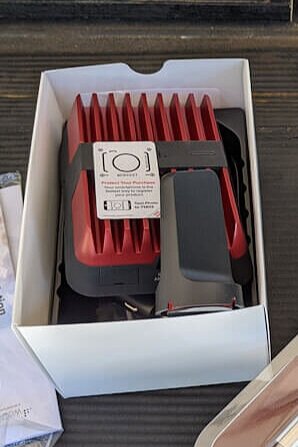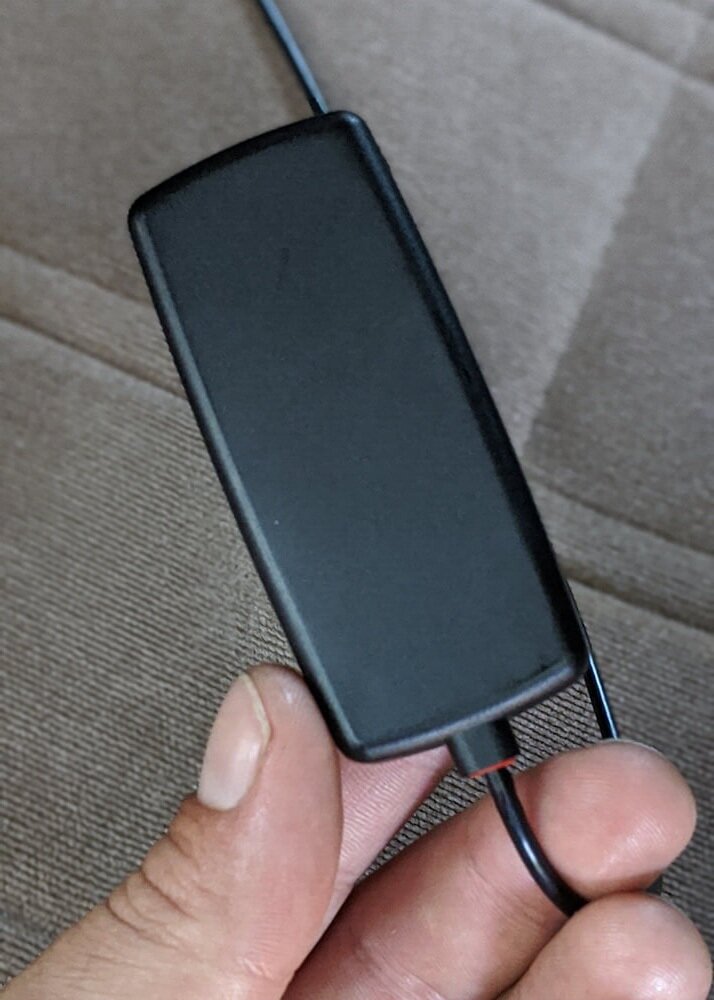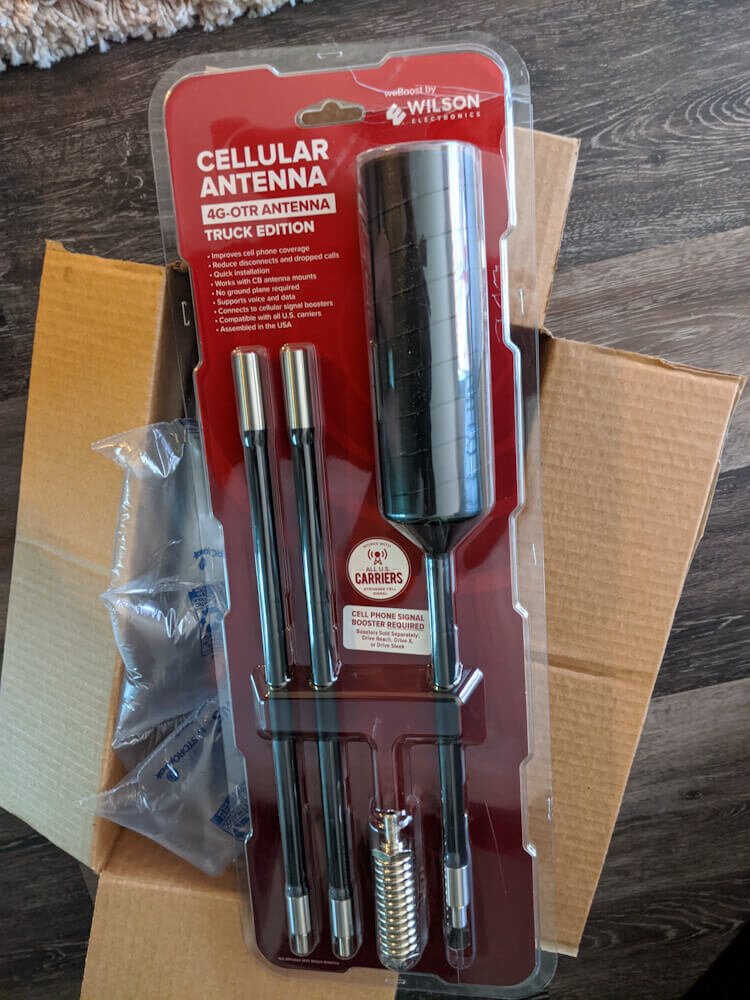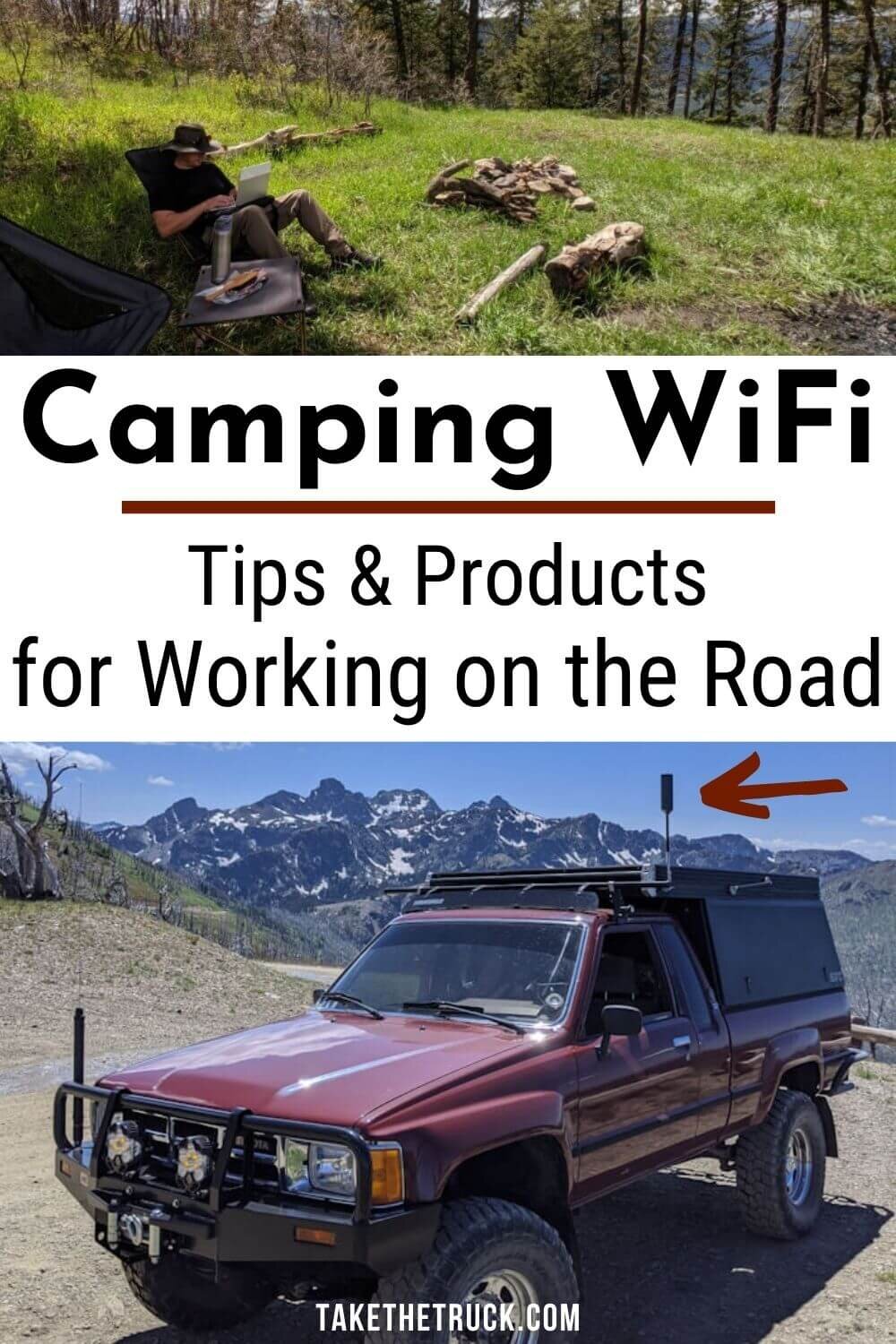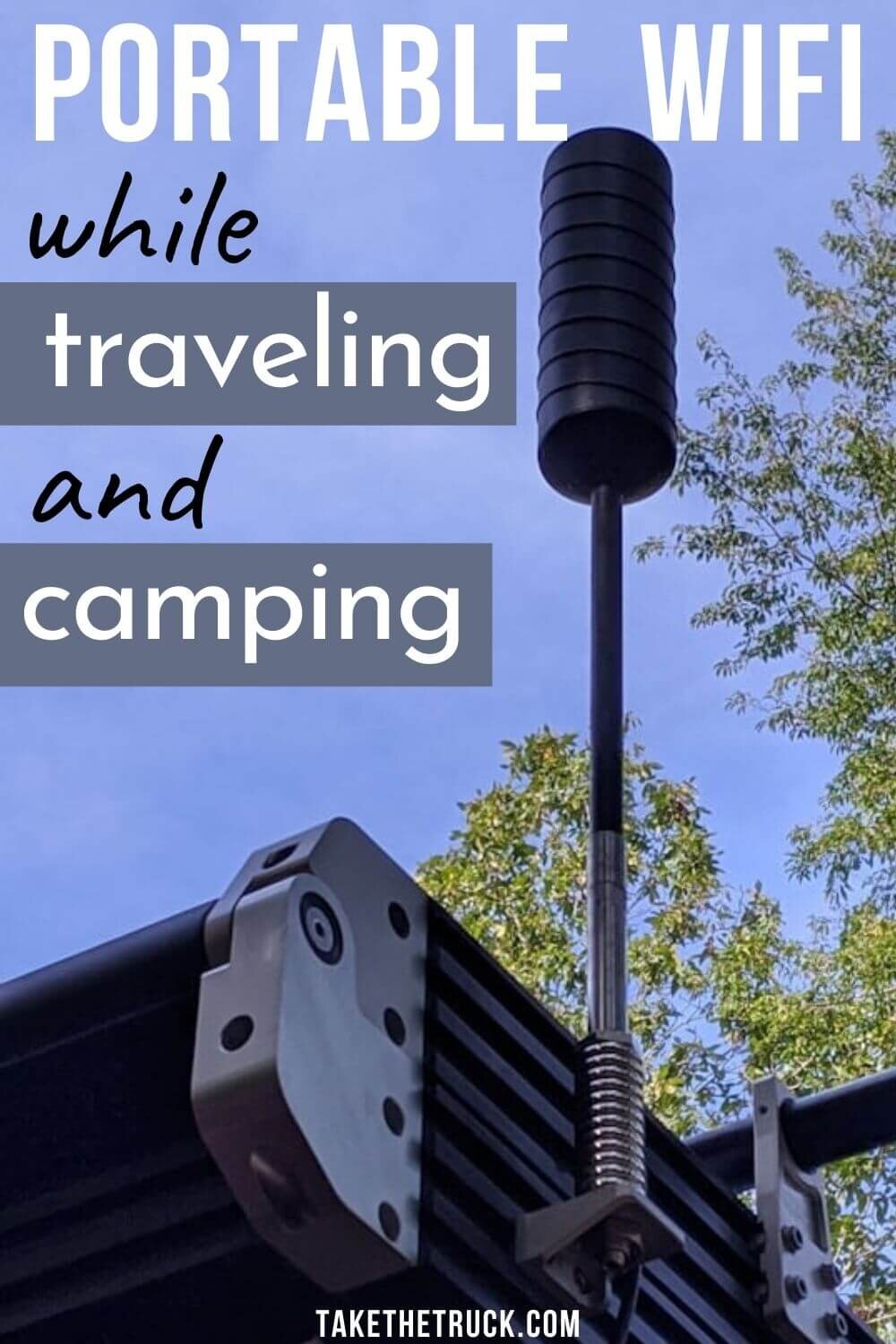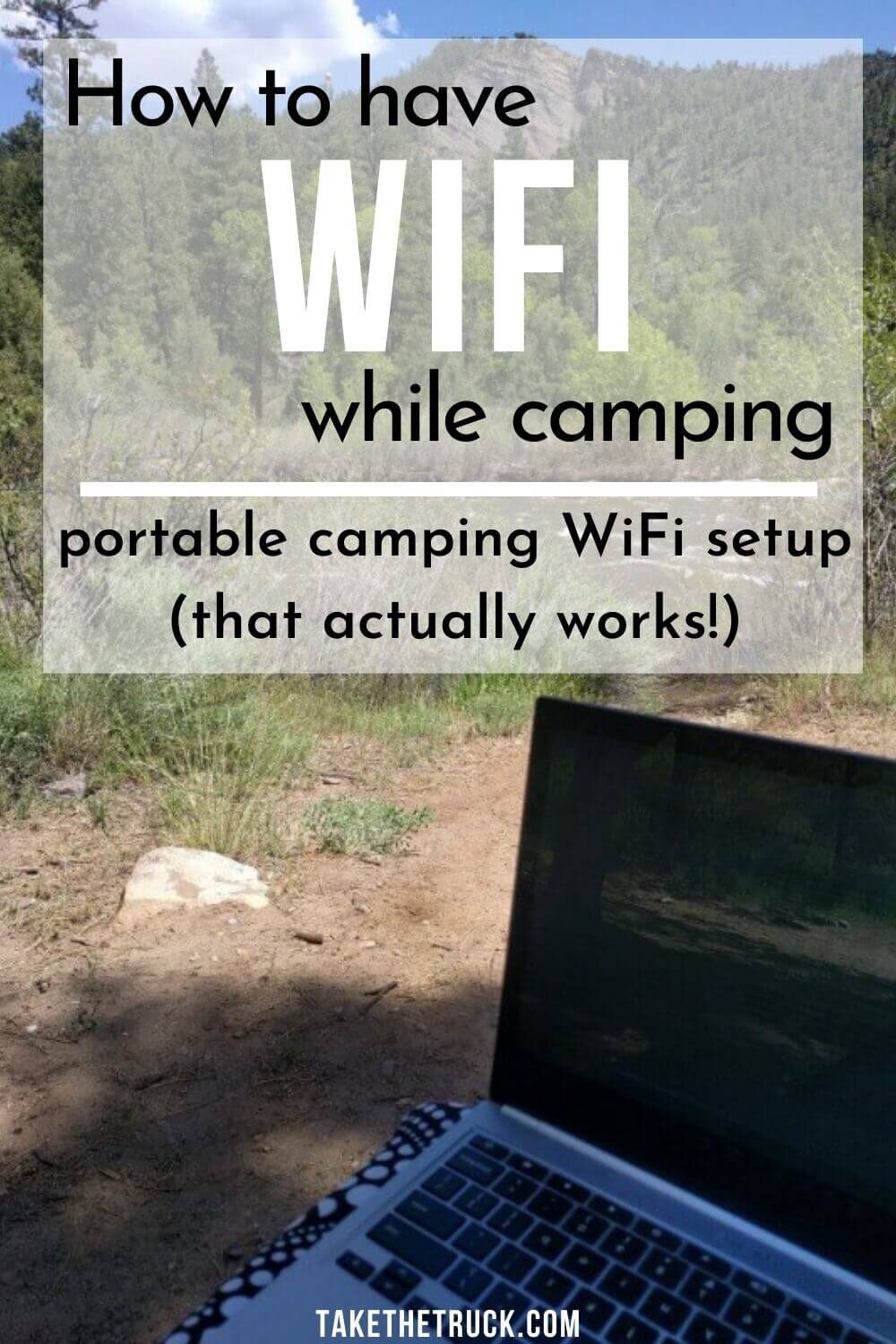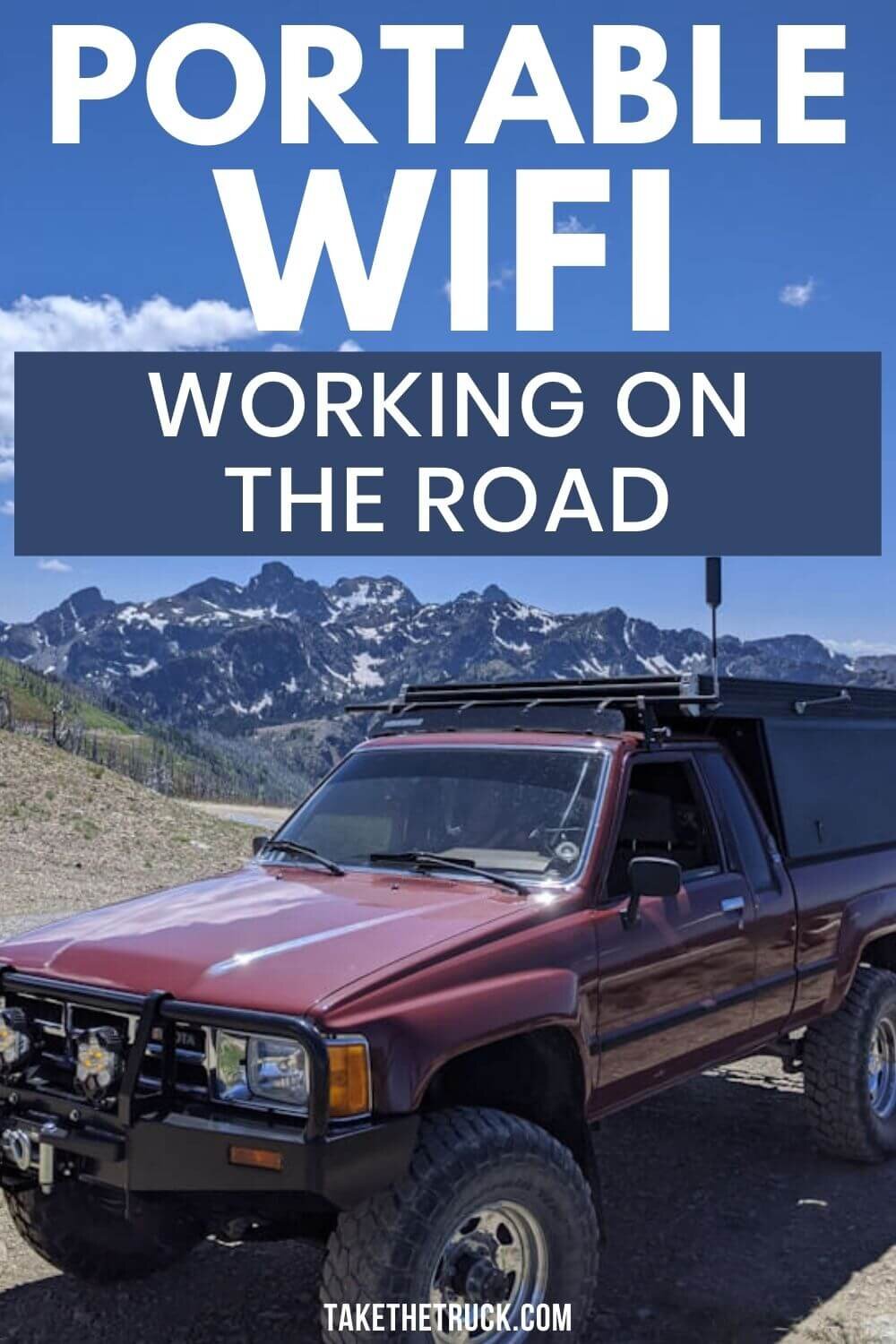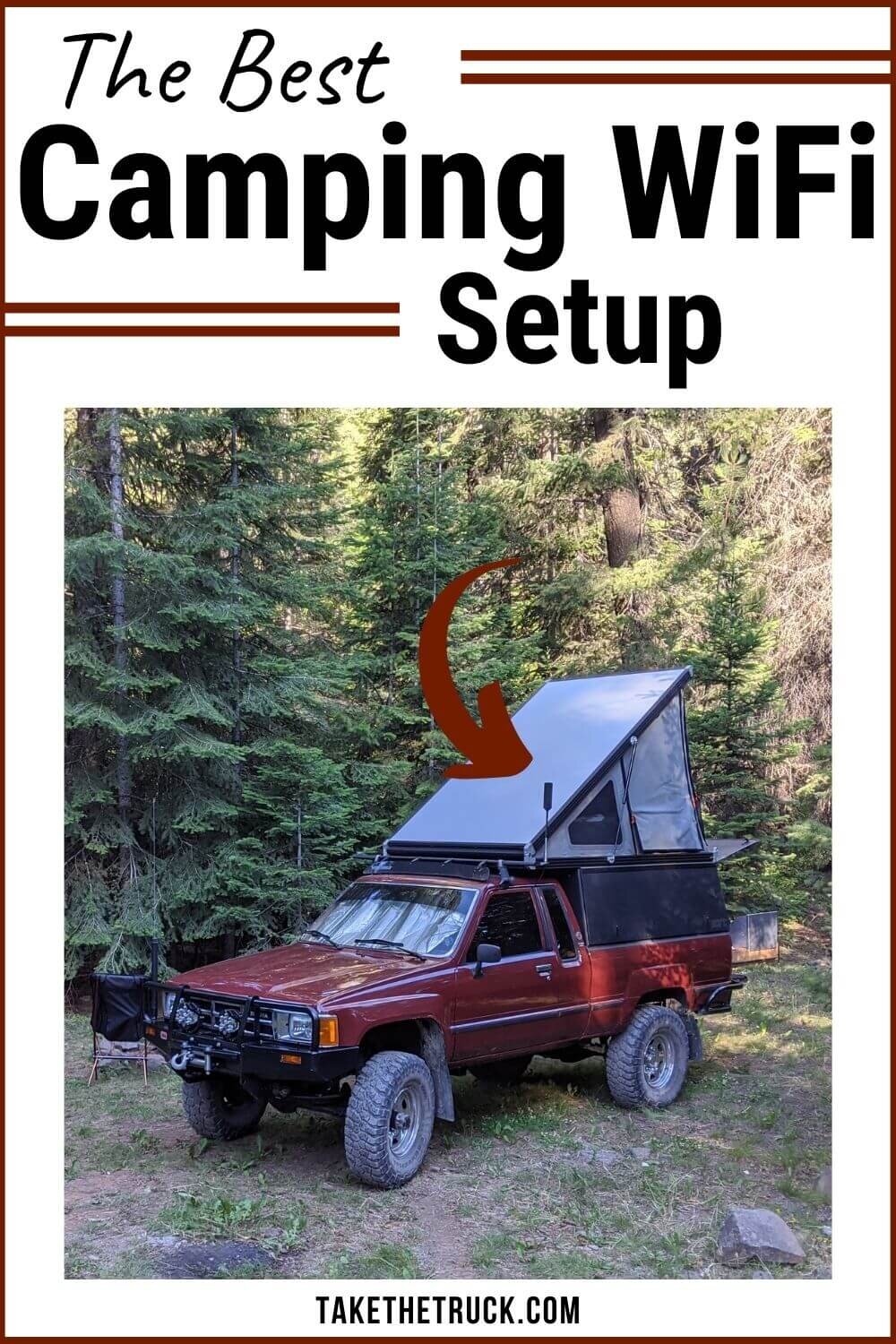Portable WiFi for Camping, Traveling, and Working Remotely [in 2025]
For those that work remotely while on the road, having reliable wifi while camping is often a struggle.
Over the years, we’ve tried various cell boosters and cell service providers, trying to find a combination that would provide a more consistent camping wifi solution. But we still often found ourselves either taking a less desirable campsite to ensure we had reliable enough cell service to use our portable wifi hotspot, or worse, we’d end up breaking camp early to seek out wifi at a local coffee shop in town.
No bueno.
Though we haven’t completely solved the camping wifi paradox, we have recently found a camping wifi setup that works better than any other we’ve tried, and wanted to share this info with fellow campers and working travelers.
Camping WiFi Tips
First, there are some basic tips that can drastically improve your chances of having a good enough cell signal to provide camping wifi.
Seek out the highest elevation campsite available
This will improve your chances of having a line-of-sight connection with the cell tower
Avoid heavily forested sites if possible
Trees and dense vegetation absorb the Electromagnetic Field communication waves that are used to communicate data between your cell phone or hotspot and the cell tower
If you’re inside your vehicle or RV, try working outside
The body of the vehicle can also impede the connection between your cell phone or hotspot and the cell tower that’s providing the data connection for your camping wifi
*(We are not sponsored by weBoost, and this is not a paid post. However, it does contain affiliate links. This means we may receive a small commission, at no additional cost to you, if you make a purchase through a link. See our full disclosure.)
The Best Cell Service For Use as Camping WiFi
Every cell service provider has its strengths and weaknesses when it comes to network coverage, cost, and tethering options.
We’ve tried nearly every option out there and after traveling all over the U.S., we’ve found that Google Fi offers the best value for those that want reasonably priced service, wide network coverage (even internationally), tethering, and versatility as a camping wifi option.
You can see both their flexible and unlimited data plan options here. We use the flexible plan because when we’re at home we use very little data. And wifi tethering is built in - which is a must for using your phone for portable wifi for camping.
Google Fi leverages multiple cellular networks including T-mobile and U.S. Cellular, and dynamically switches between them to provide the greatest service depending on how close the nearest cell tower is and how strong the signal is.
We used this service [in combination with our cell booster which we’ll discuss below] during our most recent trips through western Montana, Idaho, Wyoming, Utah, and Colorado and there were very few places, even in the most remote locations, where we couldn’t find some form of usable service.
The Best Signal Booster for Camping WiFi
When we first started working and traveling back in 2012 (see the image at the top of this post of a much younger Patrick working from the base of Mount Whitney 😅), cell boosters were relatively new to the mainstream and the ones on the market were NOT effective. Plus the cellular network in general was not as robust. So more often than not, we’d get stuck looking for the closest coffee shop, fast-food restaurant, or library to fill our camping wifi needs.
Fast forward to today, the cellular network in the U.S. has both further reach and faster speeds, and there is finally a cell phone signal booster that actually works!
It’s the WeBoost Drive Reach Cell Signal Booster.
The kit includes:
The cell booster
12v power adapter
A Magnetic-mount Antenna for the outside of your vehicle
If your vehicle will allow - we'd HIGHLY recommend buying for the additional weBoost OTR Antenna* as it places the antenna further up on your vehicle and, in our experience, provides an overall better signal strength in more remote or wooded areas.
An internal antenna - used to broadcast the signal inside of your vehicle
HOWEVER this is key: Your cell phone or portable cellular hotspot MUST be directly on top of the internal antenna in order for the booster to work to its full potential.
Admittedly, the weBoost Drive Reach is a bit of an investment, and it’s not going to miraculously create usable cell service where none exists. But if you need wifi while camping, we’ve found that it has been well worth the investment.
On numerous occasions it took our cell signal from weak or nearly non-existent, to adequate enough to use for camping wifi to be able to work remotely, or even binge watch Netflix on occasion! And even when our signal was already decent, the weBoost significantly improved our upload and download speeds.
Having this camping wifi setup has drastically reduced the daily stress of working remotely by minimizing the constant struggle of finding reliable cell service while camping. Plus it has opened up so many more amazing campsites that we would have otherwise had to pass up - and that alone is worth its weight in gold!
Satellite Based Camping Wifi Options
When we started working remotely while traveling and camping in 2012, the thought of ubiquitous global internet access was the stuff of dreams; now, a little more than a decade later, that dream is a reality! The advent of Starlink has brought about a revolution in Camping Wifi accessibility, though the price is steep for the convenience and is likely only practical for those living and working on the road full-time. Below we’ll cover the two variants of Starlink that will provide the ultimate camping wifi solution now - and in the future.
Starlink Mobile In-Motion for Camping Wifi
After an initial investment in their standard satellite receiver ($599), Starlink Mobile Service plans provides unlimited inland data internet access either regionally ($150/month) or globally ($200/month). With this service you can have camping wifi anywhere you have clear line-of-sight to the sky, and never be bound to available cellular data again! Plus you can pause service as needed when not in use. The standard dish is only available with a 110v AC power supply so you’ll need a Camping Power Supply with an 110v AC output option, OR there are aftermarket 12v flat mount kits that can allow you to run your starlink off DC 12v power.
The Starlink antenna and router draw 45-75 watts on average when in use using 110v AC power (or 3-6amps/hour on DC 12v), so you’ll need a fair amount of off-grid power storage for a full day of work while camping.
Starlink Direct to Cell Camping Wifi (Coming Late 2025)
Starlink’s Direct to Cell Service will be the next evolution in camping wifi access, offering global satellite-based text, voice, and data internet access to any LTE-capable cell phone using a combination of existing cellular networks, Starlink’s satellite infrastructure, and Starlink’s ground network. While this service won’t be fully available as a camping wifi option until later in 2025 (and pricing info is not available yet), we’re confident this will be a game changer for camping wifi access.
Currently, however, for the average weekend camper, or those looking for better access to camping wifi without a significant added monthly cost, the combination of Google Fi cell service with the weBoost Drive Reach cell booster is still a solid choice.
If you have any questions about our camping wifi setup, please drop a comment below.
And thanks for reading!
Related Posts:
Everything You Need to Know About Solar Generators for Camping
Why We Love This Camping Washing Machine [Scrubba Wash Bag Review]
Wild Camping Safety & Security Tips: Conquer Your Boondocking Fears
Pin Me!
We’d appreciate a share!




